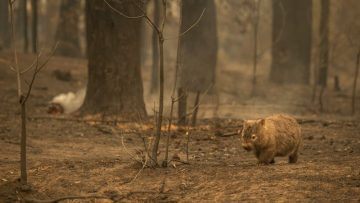Dyani Lewis in Nature:
 Australia is in the grip of its worst wildfire season on record. The human death toll stands at 27, and some 2,000 homes have been destroyed across more than 10 million hectares of land — an area larger than Portugal. An estimated 1 billion wild mammals, birds and reptiles have perished. Michael Clarke, an ecologist at La Trobe University in Bundoora, Melbourne, has been studying the effect of fires on native ecosystems — and how they recover — ever since a fire tore through his field site 15 years ago. Clarke spoke to Nature about how animals fare in the wake of wildfires, and why this season’s fires could prove particularly devastating.
Australia is in the grip of its worst wildfire season on record. The human death toll stands at 27, and some 2,000 homes have been destroyed across more than 10 million hectares of land — an area larger than Portugal. An estimated 1 billion wild mammals, birds and reptiles have perished. Michael Clarke, an ecologist at La Trobe University in Bundoora, Melbourne, has been studying the effect of fires on native ecosystems — and how they recover — ever since a fire tore through his field site 15 years ago. Clarke spoke to Nature about how animals fare in the wake of wildfires, and why this season’s fires could prove particularly devastating.
What happens in the aftermath of a wildfire?
It is deathly silent when you go into a forest after a fire. Apart from the ‘undertakers’ — the carrion eaters like currawongs, ravens and shrike-thrushes — picking off the dead bodies, there’s nothing much left in the forest. It’s a chilling experience. For survivors, it’s a perilous existence in the months that follow. Any animal that manages to make it through the fire uninjured faces three major challenges. One is finding shelter from climatic extremes — places they can hide from bad weather, like a hollow tree or a hole in the ground. The second is the risk of starvation. And third, they’ve got to avoid predators like feral cats and foxes. They’re exposed; there’s nowhere to hide in a barren landscape. Even if an animal makes it to an unburnt patch, the density of organisms trying to eke out a living will be way beyond the area’s carrying capacity. After fires in 2003, one unburnt patch I visited in the Mallee [a region in the far north of Victoria] was literally crawling with birds, all chasing one another, trying to work out who owned the last little bit of turf. It was clearly insufficient to sustain them all.
More here.
